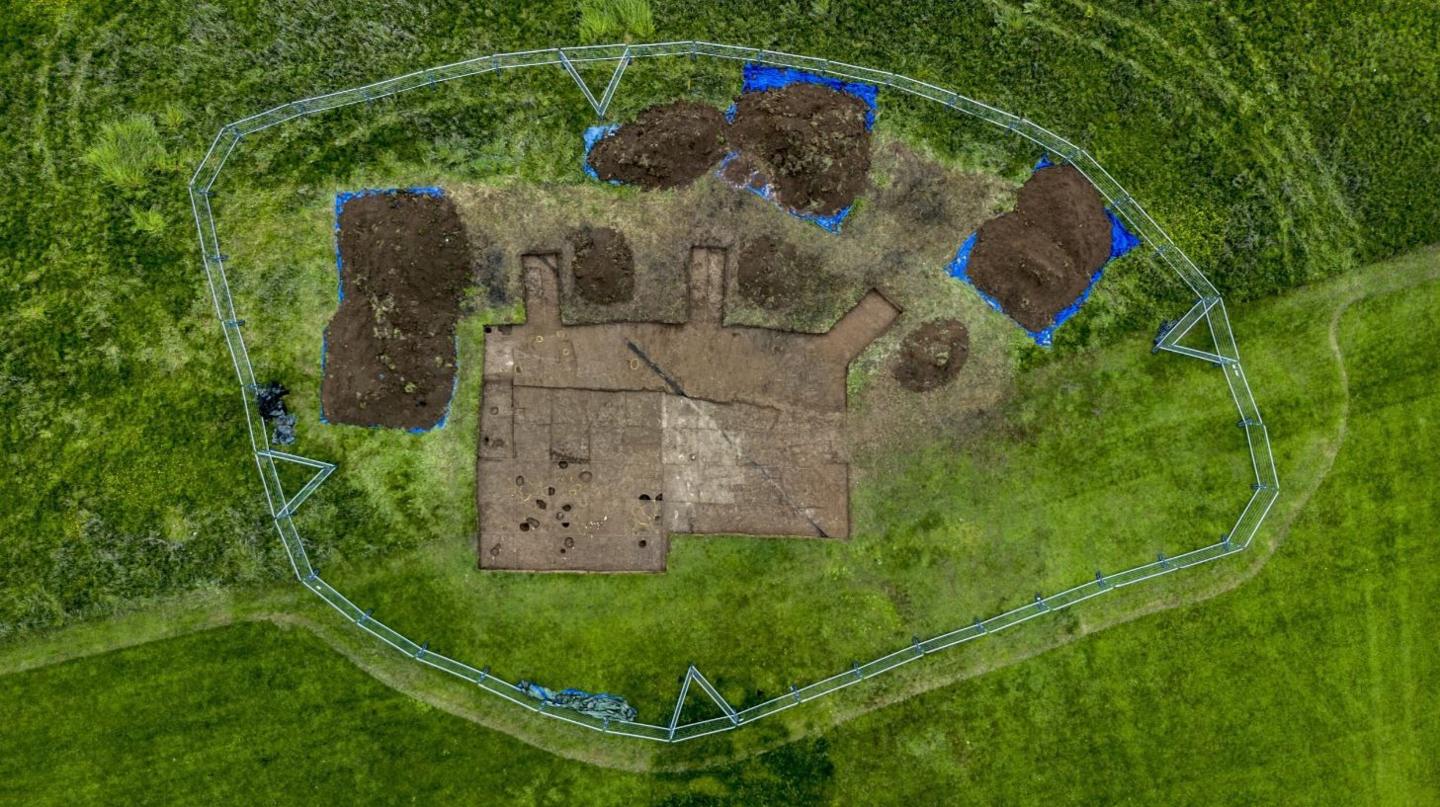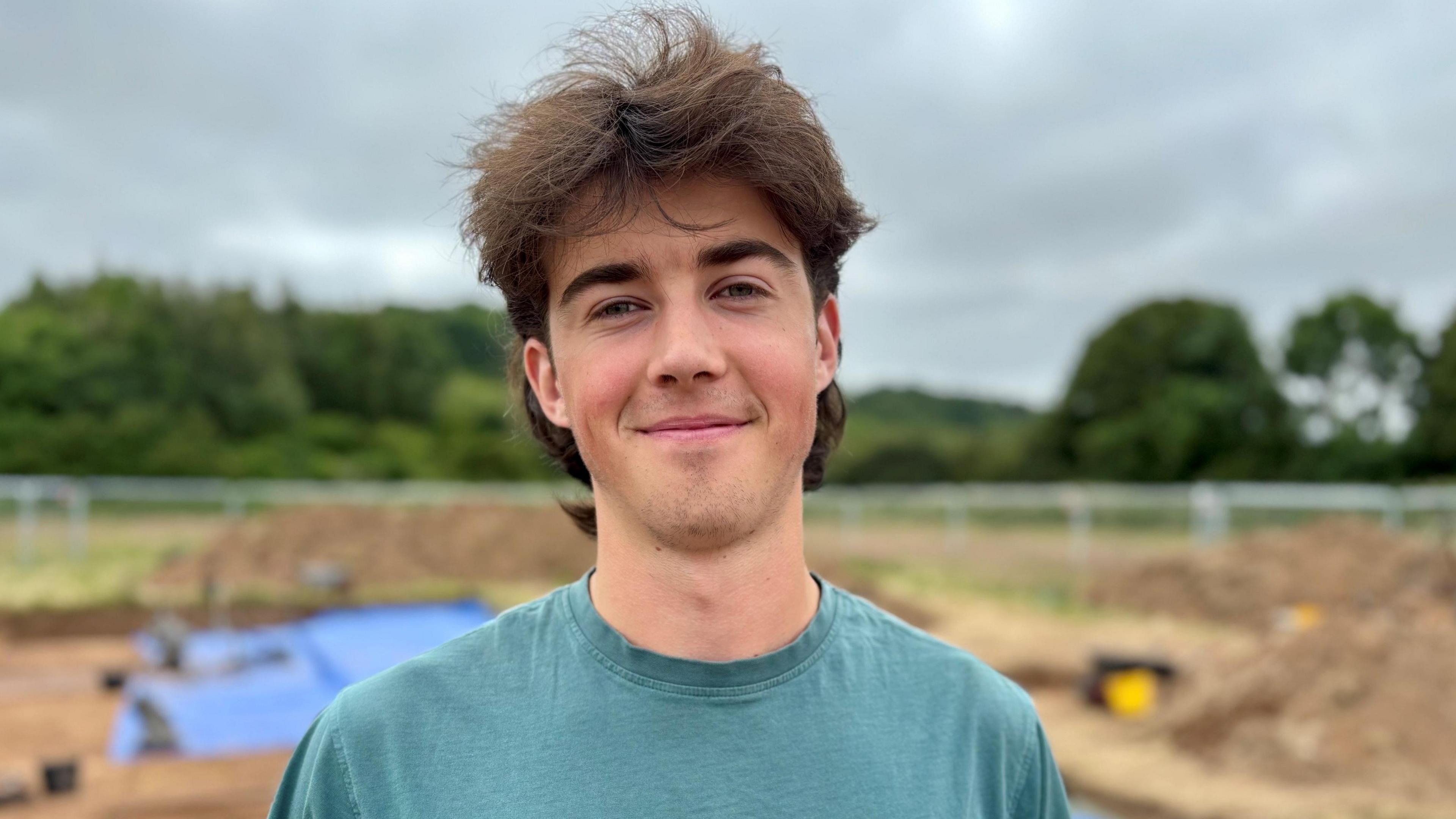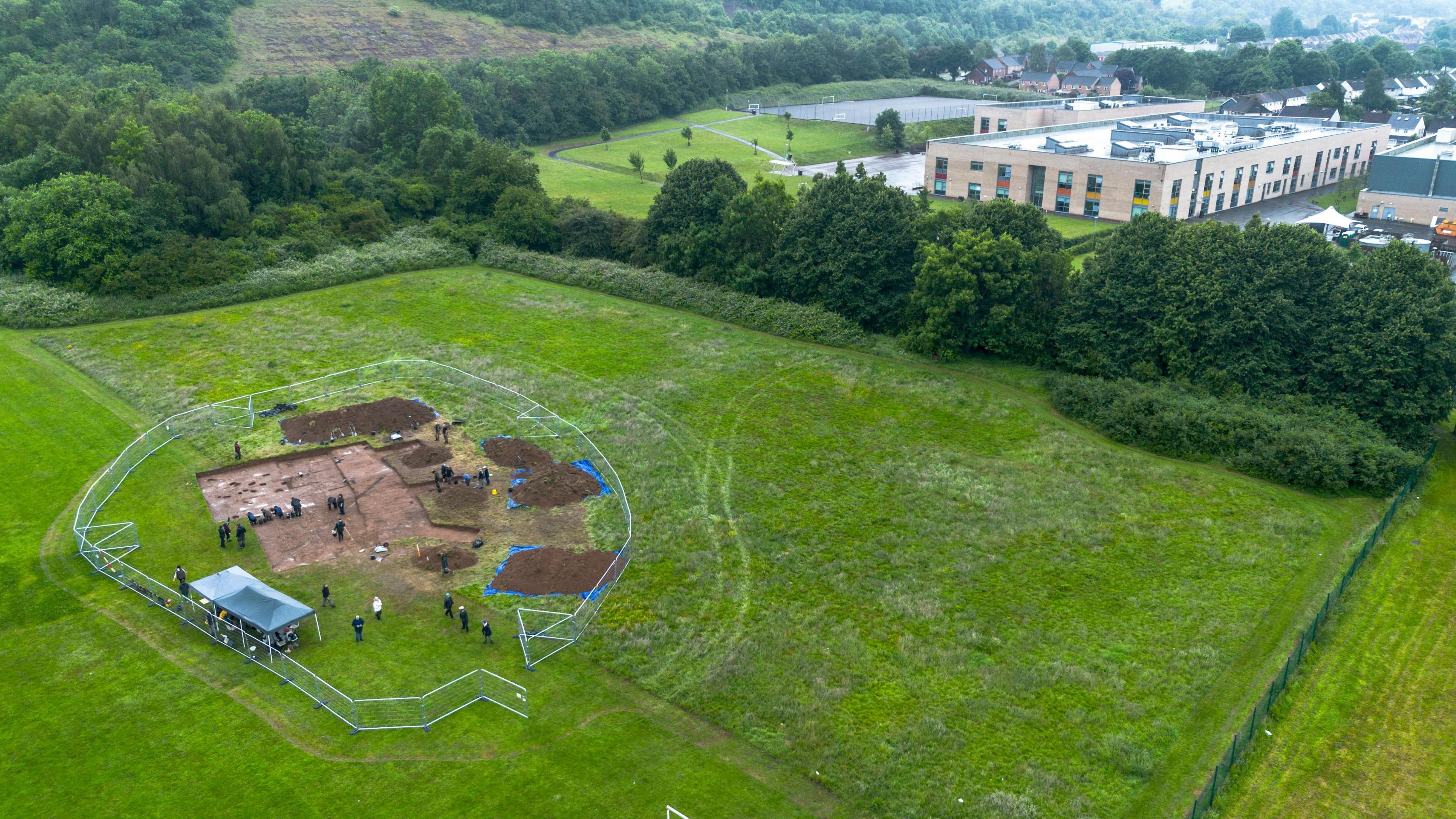Bronze Age burial site found under park

A number of pits dating back to the Bronze Age have been uncovered at Trelai Park
- Published
An archaeological dig has uncovered an ancient burial ground underneath popular playing fields in Cardiff.
Volunteers at a heritage project excavation said they found a number of pits at Trelai Park near Caerau Hillfort, with at least three holding a small amount of cremated human remains.
The remains, which date back to the Bronze Age, were found next to a roundhouse previously discovered by the project which was said to potentially be the earliest house found in Cardiff.
Dr Oliver Davis, Caerau and Ely Rediscovering (CAER) Heritage Project co-director, said the discovery was "hugely exciting" and provided a window into the lives of Cardiff residents from over 3,000 years ago.
"The fact that the cremations have been buried so close to the roundhouse suggests they may have been laid there to remember cherished family members," he said.
"It could also mean the site held a ceremonial significance to people at the time."
Dig resumes at house thought to be city's oldest
- Published20 June 2023
3,000-year-old house found in archaeological dig
- Published13 July 2022
The fourth phase of the project's archaeological investigation also discovered a new structure next to the roundhouse previously found.
It was next to the foundations of this smaller building where the pits were located, along with evidence of a timber circle further down which experts believe may date to the Early Bronze Age around 2000-1600 BC.
Volunteers are now working to piece together the significance of the latest finds, which suggest the site could be more expansive than previously thought.
Dr Davis said: "The smaller structure we have found sits very near to the original roundhouses we discovered in 2023, these structures were luxurious and spacious."
He added the smaller structure could be an additional house for another family, or maybe an ancillary building used for preparing food and craft-working.

Archaeology student Dan Quelly has spent the last year volunteering for the CAER Heritage project
Trelai Park is a well-used location for sports teams and dog walkers and is half a mile from Caerau Hillfort, a heritage site of national significance.
Neolithic, Iron Age, Roman and medieval finds have all previously been discovered by archaeologists at the site.
Dr Davis said the area, which was only 650 ft (200m) away from a Roman Villa, had been an important place over thousands of years.
"It's providing us with a window onto some of the very earliest Cardiff residents who were living here in Caerau and Ely over three millennia ago," he said.
"The work now begins to carefully dig through each layer, sifting through the materials we are finding here on an hourly basis. It's a real team effort."

Those behind the project think Trelai Park could be one of the most important parks for heritage in south Wales
Volunteer Hannah Secker, 19, from Grangetown, has finished her A Levels and wants to study archaeology and ancient history at degree level.
She said: "It's unbelievable finding artefacts that could be 3,000 years old and thinking about the people that have walked on this ground before us."
Dan Queally is due to graduate from Cardiff University with a BA in archaeology and chose to do his dissertation on the CAER project.
"It's not just about the archaeology that I've learned about, it's about seeing the difference a project like this can make to people here and now," he said.
"It's been a big perspective shift for me."
According to Dr David Wyatt, CAER co-director, the finds from Trelai Park "just keep coming".
"It's not difficult to argue that Trelai could be one of the most important parks for heritage in south Wales," he said.
"It really has all the potential to be a popular and thriving tourist attraction which could hugely benefit the local communities."
Mike Tate, headteacher of Cardiff West Community High School metres away from the site, said the school saw real value in its links to the project.
"Our pupils learn about the history of the area in which they live and they, literally, get their hands on the past."